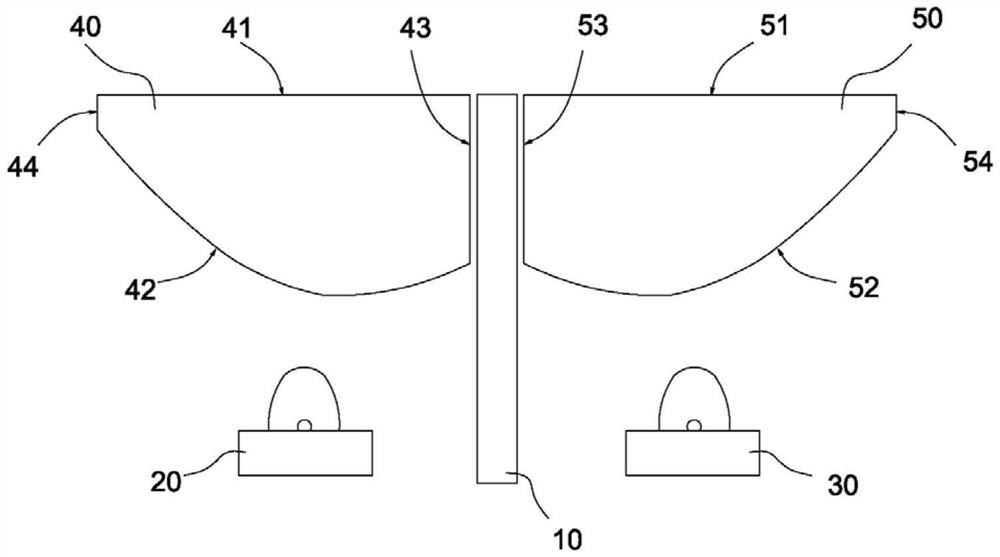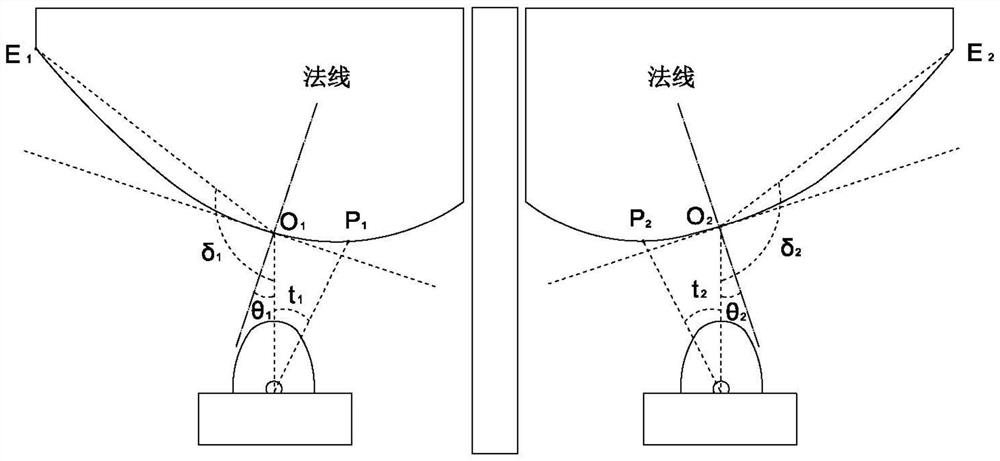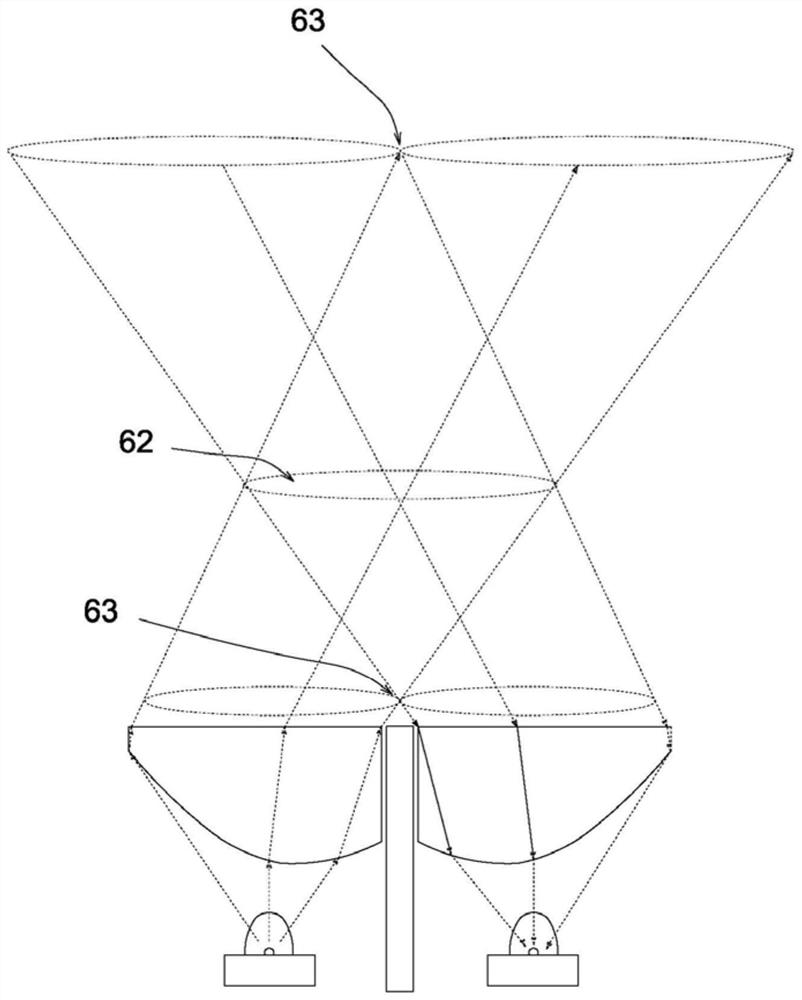Close-range detector
A detector and short-distance technology, which is applied in the field of detectors, can solve problems such as machine crashes and signal interference, and achieve the effects of increasing signal strength, improving the noise-to-noise ratio, and reducing noise and light
- Summary
- Abstract
- Description
- Claims
- Application Information
AI Technical Summary
Problems solved by technology
Method used
Image
Examples
Embodiment 1
[0043] Please refer to Figure 1 to Figure 5 .
[0044] A kind of close-range detector, comprises black baffle 10, the emission source 20 that is positioned at black baffle 10 both sides, receiving chip 30, the first lens 40 that is positioned at emission source 20 upper side, the second lens 40 that is positioned at receiving chip 30 upper side The lens 50, the emission source 20 adopts a light emitting diode;
[0045] The first lens 40 has a first light exit surface 41 close to the object side, a first light incident surface 42 close to the emission source 20 side, and a first side surface 43 close to the black baffle 10 baffle side. Surface 41 is a plane;
[0046] The second lens 50 has a second light incident surface 51 close to the object side, a second light exit surface 52 close to the receiving chip 30 side, a second side surface 53 close to the black baffle 10 side, the second light incident surface 51 is a plane;
[0047] The light emitted by the emission source 20...
Embodiment 2
[0058] Please refer to Figure 8 .
[0059] In this embodiment, an included angle γ is formed between the first side 43 and the black baffle 10 1 , the angle γ is formed between the second side 53 and the black baffle 10 2 , gamma 1 with gamma 2 Satisfy the following conditions: 0°1 = γ 2 <90°. The first side 43 is designed to a certain angle of inclination, so that the emitted stray light is absorbed by the black baffle plate 10 in the middle, thereby avoiding the emission of the stray light; the second side 53 is designed to have a certain angle of inclination, so that The incident light is deflected so that the light in the harmful visible area 84 cannot be received by the receiving chip 30 .
Embodiment 3
[0061] Please refer to Figure 9 .
[0062] In this embodiment, the end of the black baffle 10 on the object side is connected with a first baffle 11, and one end of the first baffle 11 extends to the side of the first light-emitting surface 41, so that the side of the first light-emitting surface 41 forms a black light-blocking The area can absorb the stray light emitted by the emission source 20, and the other end of the first baffle 11 extends to the side of the second light incident surface 51, so that a black light blocking area is formed on the side of the second light incident surface 51, so that The emitted stray light is absorbed.
PUM
 Login to View More
Login to View More Abstract
Description
Claims
Application Information
 Login to View More
Login to View More - R&D
- Intellectual Property
- Life Sciences
- Materials
- Tech Scout
- Unparalleled Data Quality
- Higher Quality Content
- 60% Fewer Hallucinations
Browse by: Latest US Patents, China's latest patents, Technical Efficacy Thesaurus, Application Domain, Technology Topic, Popular Technical Reports.
© 2025 PatSnap. All rights reserved.Legal|Privacy policy|Modern Slavery Act Transparency Statement|Sitemap|About US| Contact US: help@patsnap.com



